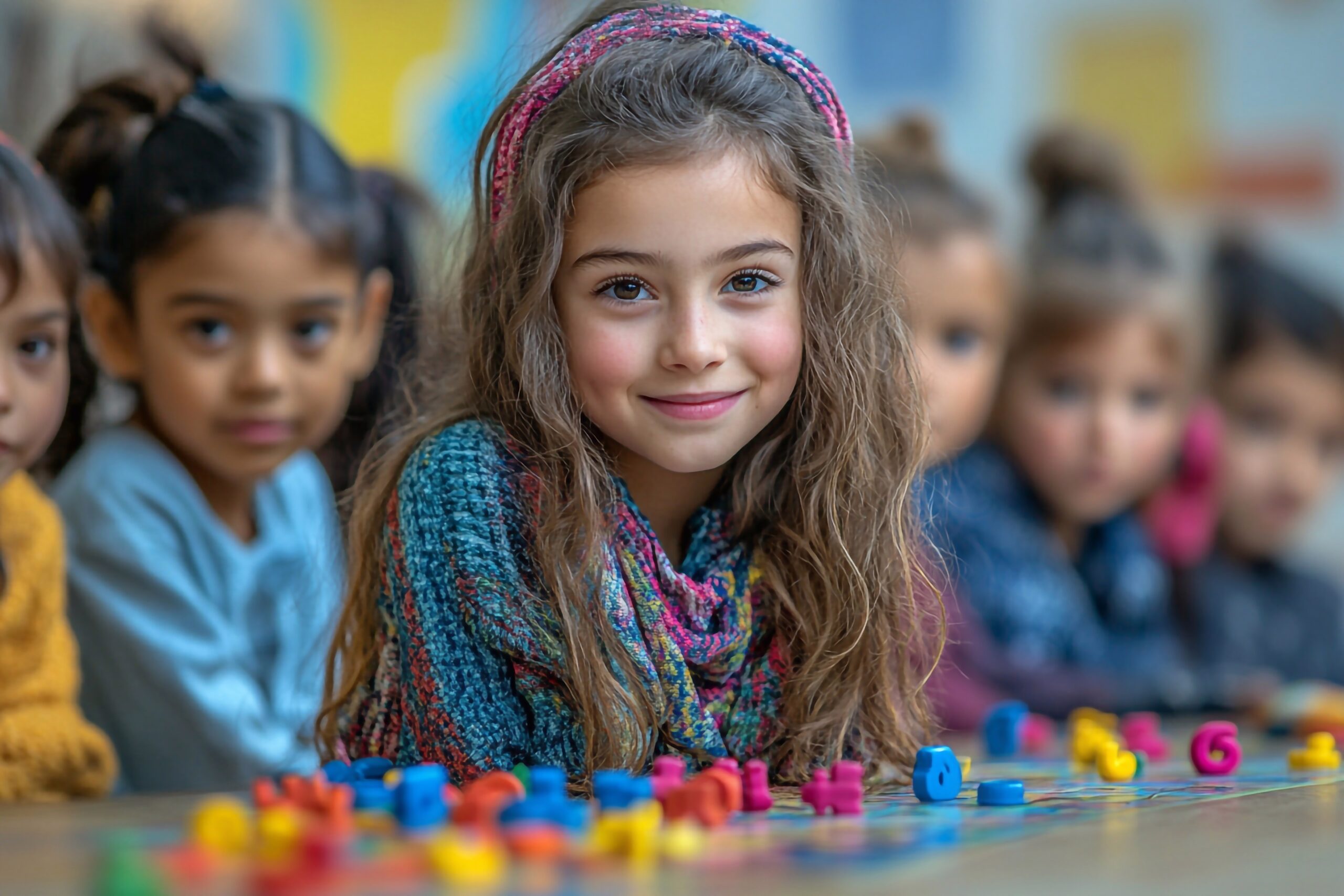People typically imagine a high achiever who succeeds with ease when they think about brilliant students. However, giftedness can take many different forms, and no two gifted students are precisely the same. While some people do well in conventional classroom settings, others have trouble staying motivated, being perfect, or simply feeling alone. Giftedness encompasses more than simply intelligence; it also includes social and emotional complexity that influence how students learn and engage with their environment.
This is the reason why a one-size-fits-all strategy is ineffective. Students that are gifted have particular requirements, difficulties, and strengths that call for various forms of assistance. Sometimes, parents and teachers ignore this variation because they believe all brilliant kids will achieve in the same way.
George Betts and Maureen Neihart created a model that distinguishes six unique characteristics of gifted kids in order to better comprehend these variations. This paradigm, which was first presented in 1988 and updated in 2010, aids in identifying the motivations, behaviors, and types of support that gifted kids require in order to realize their full potential. By comprehending these characteristics, we can go beyond classifications and offer the appropriate direction to support each student’s success.
The Six Types of Gifted Students
Not all gifted students are created equal. Some people thrive in school with ease, while others have social difficulties, boredom, or poor performance. Giving the appropriate support requires an understanding of these distinctions.
Six different categories of gifted kids are described in the model created by George Betts and Maureen Neihart; each has particular needs, challenges, and talents. Parents and teachers can support gifted students in realizing their full potential in ways that suit their unique learning styles and personalities by identifying these profiles.
1. The Successful Gifted Student
Characteristics
When most people think of a gifted youngster, they typically think of the successful gifted student. These pupils easily exceed standards, follow school policies, and routinely earn excellent scores. They frequently strive for excellence, want to win over their teachers, and take pride in their achievements. They may be viewed as “teacher’s pets” due to their excellent behavior and intellectual prowess, which makes it difficult for them to relate to their peers.
Challenges
Because they are so preoccupied with adhering to established academic courses, these kids frequently lack innovative and divergent thinking despite their apparent achievement. They can shy away from taking chances in favor of sticking to what they know will work. This can eventually make them reluctant to try new things, and when they leave organized settings like school or college, they could find it difficult to be independent. In maturity, when they lack external affirmation for their accomplishments, they may encounter difficulties if they are unable to self-direct their learning.
Strategies for Support
Parents and teachers can support Successful Gifted Students in stepping outside of their comfort zones by:
- Permit children to work on projects that don’t have definite right or wrong solutions to promote risk-taking and self-directed learning.
- Provide students with innovative problem-solving exercises that challenge them to go beyond formulas and memorization.
- Offer guidance and practical problems that call for initiative, leadership, and creative problem-solving.
For instance, encourage them to come up with a novel solution to a real-world issue or investigate a subject in a self-directed manner rather than assigning them another challenging worksheet. Instead of focusing only on their capacity to fulfill expectations, this method encourages confidence in their own skills.
2. The Challenging (Creative) Gifted Student
Characteristics
A natural innovator with a keen sense of curiosity and inventiveness is the challenging gifted student. They frequently challenge authority, don’t always obey the rules, and can come out as rebellious or defiant, in contrast to the Successful Gifted Student.
They could object to regimented learning settings that seem constrictive and would rather investigate concepts independently. While their ability to think outside the box is a strength, they can also struggle with self-esteem, feeling frustrated when their unique ideas aren’t appreciated or when they don’t fit into traditional educational settings.
Challenges
These pupils may become known as troublemakers instead of getting acknowledged for their exceptional skills since they don’t fit in. Behavior problems may result from their refusal to simply follow directions, particularly if they feel unsupported or misunderstood.
They are frequently extremely sensitive to rejection and criticism, which can lead to them acting out or withdrawing when they don’t feel heard. Instead of being acknowledged for their intellectual curiosity, a creative student who asks “why” all the time could be called disruptive. This may eventually result in a lack of interest in learning and annoyance with those in positions of power.
Strategies for Support
A flexible and encouraging approach is necessary to promote the success of challenging gifted students:
- Give children opportunities to express their creativity and solve problems by letting them work on unstructured projects related to their interests.
- To help children feel in charge of their education, support self-directed projects and alternate teaching strategies. To demonstrate their understanding, they could, for instance, make a storyboard or a podcast in place of a traditional book report.
- Assist them in learning self-advocacy and emotional control techniques so they may communicate their opinions in healthy ways instead of defying authority.
Parents and teachers can assist these adolescents in effectively expressing their energy while making sure they feel appreciated and understood by acknowledging their need for independence and artistic expression.
3. The Underground Gifted Student
Characteristics
In order to blend in, the Underground Gifted Student conceals or minimizes their talent. In addition to guys who put athletics or social approval ahead of academic achievement, this is also prevalent among middle school girls who worry about being perceived as “too smart” or distinctive.
To fit in with their peers, some kids may intentionally perform poorly, avoid obstacles, or oppose advanced programs. They feel conflicted between their need for belonging and their intellectual capacity, although they don’t necessarily struggle with competence.
Challenges
These adolescents frequently struggle with significant uncertainty and self-acceptance because they feel torn between the pressure to fit in with their friends and the expectations of their parents and professors. Because they believe gifted programs are linked to social isolation, they may reject them.
Over time, this internal conflict can lead to academic disengagement, making individuals mistrust their own talents or lose interest in learning entirely. A student who once loved math might suddenly refuse to join an advanced class because their friends aren’t in it.
Strategies for Support
It takes time and comprehension to support underground gifted students:
- Give them access to peer mentorship and talented role models so they can observe successful people who strike a balance between social ties and intelligence.
- Instead of pushing kids into advanced classes, give them the choice to select academic challenges so they can feel in charge of their education and still have a social life.
- Encourage a smooth transition back into gifted education, for example, by allowing students to pursue their interests through enrichment activities rather than formal gifted programs.
By creating a safe and supportive environment, parents and educators can help these students rediscover their abilities without fear of losing their social identity.
4. The At-Risk (Dropout) Gifted Student
Characteristics
Perhaps the most underappreciated is the dropout gifted student. Because their educational requirements aren’t being satisfied, these students frequently experience anger, frustration, or a total disengagement from school. They do not flourish in regimented academic environments like the Successful Gifted Student does, and they may act out or withdraw.
While some turn to disruptive conduct as a means of expressing their discontent, others become quiet and gloomy. Since traditional academics don’t fit with their abilities, many of these individuals may feel like failures in school, even when they have strong talents in fields like music, art, or technology.
Challenges
Believing that school has no bearing on their interests or future is one of the main challenges faced by At-Risk Gifted Students. Teachers frequently make them feel invisible or misinterpreted, which lowers their self-esteem and makes them feel like they don’t belong. These students are more likely to drop out if appropriate help is not provided, either physically by leaving school early or mentally by losing interest in learning entirely. For instance, a student who excels at coding could struggle in math class just because the lesson plan doesn’t suit them.
Strategies for Support
Aiding Those in Danger Gifted students need a lot of emotional support and flexibility.
- Provide them with alternate learning settings that relate their education to their interests in the real world, including project-based learning, independent study, or apprenticeship opportunities.
- Offer them emotional support and therapy to help them overcome frustration and regain their confidence.
- Establish trusting bonds with mentors and teachers who are aware of their requirements and who can help kids realize the benefits of learning, even if it doesn’t appear like a regular classroom.
Teachers and parents can assist these youngsters rediscover their love of learning and discover purposeful methods to succeed by identifying their talents and providing innovative learning pathways.
5. The Twice-Exceptional (Double-Labeled) Gifted Student
Characteristics
The Exceptional Twice (2e) Talented The student has a learning handicap, ADHD, autism, or a physical impediment in addition to being talented. It might be challenging for educators to see their full potential because their skills and difficulties frequently obscure one another.
While some people may have great arithmetic ability but find social interactions overwhelming, others may struggle with reading yet excel at solving problems. They may appear to be “average” pupils because they frequently make up for their struggles, which could result in misidentification or inadequate treatment.
Challenges
Because their strengths don’t always match conventional academic standards, twice-exceptional students frequently feel frustrated and self-conscious. They become disappointed since many schools emphasize their flaws rather than fostering their talents.
For instance, despite having a sophisticated understanding of physics, a dyslexic student may be sent to remedial reading lessons. Because they might not entirely fit in with gifted programs or special education services, this mismatch can result in low self-esteem, academic difficulties, and feelings of loneliness.
Strategies for Support
A well-rounded and customized strategy is necessary to support Twice-Exceptional Gifted Students in thriving:
- Employ a strengths-based strategy that acknowledges their abilities while offering the assistance they require to overcome their obstacles. Allowing a dyslexic student to use speech-to-text software, for instance, can assist them communicate complex concepts without having to struggle with writing.
- Make sure they can interact with advanced content while getting the assistance they require by making accommodations without reducing expectations.
- To help people recognize and successfully articulate their own needs, teach them coping skills and self-advocacy techniques. Resilience and confidence can be increased by encouraging them to accept their individual challenges and talents.
6. The Autonomous Gifted Student
Characteristics
The ideal result of gifted education is the autonomous gifted student, who is self-driven, self-sufficient, and goal-oriented. Instead of just following the curriculum, these students actively seek out opportunities and challenges to further their education.
The Autonomous Gifted Student learns how to take advantage of the system, in contrast to the Successful Gifted Student, who flourishes within it. They have excellent leadership qualities, innovative problem-solving capabilities, and an innate curiosity for novel concepts. Many of them are forward-thinking inventors, business owners, or future leaders.
Challenges
Despite their advantages, autonomous gifted students may find it difficult to succeed in rigid, traditional classroom environments. Rigid institutions that prevent people from pursuing their interests in depth or moving at their own pace frequently frustrate them.
They might disengage or seek out possibilities outside of school to satisfy their intellectual requirements if they are made to do monotonous or uninteresting tasks. Additionally, because they are highly independent, they may lack a strong peer group unless they find like-minded individuals who share their ambitions and curiosity.
Strategies for Support
In order to foster autonomous gifted students, it’s critical to offer them chances that align with their motivation and independence:
- Encourage them to pursue passion projects and self-directed study so they can take charge of their education and delve deeply into subjects. This may involve letting students design their own research initiatives or start a club around their interests.
- Encourage risk-taking and discovery outside of the classroom by encouraging them to attempt new things and move beyond their comfort zones, such as contests, public speaking, or artistic endeavors.
- Make connections with professionals in their fields of interest by providing mentorships, internships, and opportunities for hands-on learning. Their future professional routes and academic pursuits are more closely aligned thanks to these experiences.
Application of the Gifted Profiles in Education and Parenting
Creating an atmosphere where gifted students can flourish requires an understanding of the six profiles of gifted students. Parents and teachers must understand that not all children are brilliant; some may thrive in structured learning, while others may struggle with self-esteem, motivation, or social acceptance. By using these profiles in parenting and education, we can create tactics that cater to the various requirements of exceptional students and go past a one-size-fits-all approach.
Identifying and Supporting Different Gifted Learners
It takes more than test results to identify giftedness. Parents and schools need to understand that talented adolescents can display a range of characteristics, from underperforming creative thinkers to high achievers. It’s possible that a student who consistently challenges authority is equally talented as the straight-A student who complies with all regulations. To make sure that no gifted student is missed, a variety of identification techniques are used, including peer nominations, instructor inspections, and performance reviews.
Addressing the Social and Emotional Needs of Gifted Students
Emotional intensity, perfectionism, and issues with self-esteem are common among gifted students. It may be necessary to reassure a child who is often doubting their work or who is afraid of failing that making mistakes is a necessary part of learning. Gifted students can feel more comfortable exploring their gifts when they are in settings that encourage self-expression and emotional control. Promoting self-advocacy, risk-taking, and resilience gives children the skills they need to overcome obstacles and deal with setbacks.
Developing Educational Strategies for Each Type
Targeted educational practices can help gifted students succeed because they have different needs:
- In order to foster their creativity and individuality, gifted students require challenges that go beyond traditional classroom instruction.
- Open-ended assignments give creatively gifted students the chance to think creatively and freely.
- Underground Gifted Students require assistance in striking a balance between their intellectual prowess and peer acceptance so they don’t feel pressured to choose between friendships and academic achievement.
- Alternative learning settings, close mentoring, and chances to link their passions to school are all necessary for at-risk gifted students.
- To prevent their limitations from overshadowing their skills, twice-exceptional students require a balance between intellectual stimulation and accommodations.
- Self-directed learning opportunities and mentorship programs that let students investigate practical uses of their knowledge are ideal for autonomous learners.
Creating Inclusive and Supportive Environments
Curricula must be modified to accommodate a variety of gifted students in order to provide inclusive learning environments. Differentiation techniques should be incorporated into schools so that students can explore their talents and work at their own speed. In order to effectively advocate for their child’s needs and guarantee that they have access to the appropriate resources, parents are essential. In turn, educators should foster the social and emotional development of talented kids in addition to pushing them intellectually.
Conclusion: A Holistic Approach to Gifted Education
Teachers, parents, and legislators can transcend conventional classifications and establish learning environments that support both academic achievement and emotional health by being aware of the six profiles of giftedness. Personalized tactics can help kids reach their full potential, regardless of whether they are high achievers, creative thinkers, or having trouble fitting in.
A flexible, strength-based strategy guarantees that talented kids get the opportunities, emotional support, and intellectual stimulation they require to succeed. To assist pupils become resilient and self-assured, schools should promote creativity, flexibility, and mentoring.
Every talented kid should have access to an education that promotes development and achievement, in our opinion at K Altman Law. Our staff is here to assist you in navigating the complexity of gifted education if you require advice on advocacy, school regulations, or legal issues.





